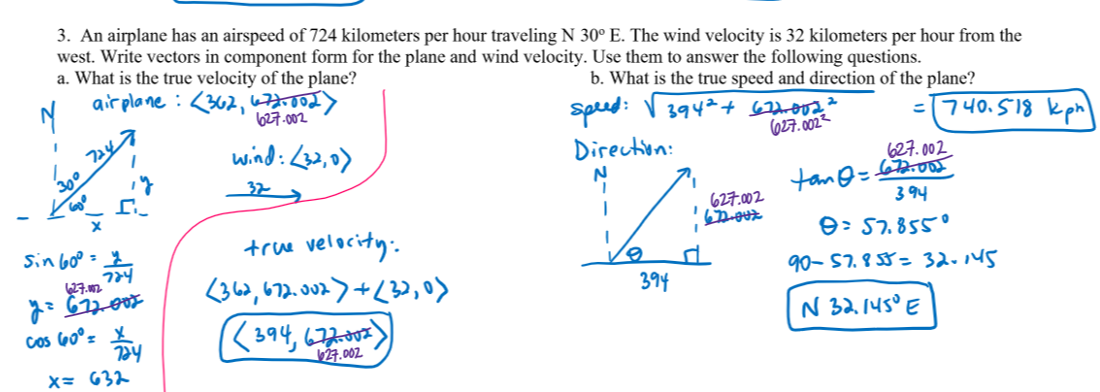math vector/parametric test
1/24
There's no tags or description
Looks like no tags are added yet.
Name | Mastery | Learn | Test | Matching | Spaced |
|---|
No study sessions yet.
25 Terms
vector
a representation of quantities that have both a size (or magnitude) and a direction (such as velocity, acceleration, force and displacement)
equivalent vectors
vectors that have the same magnitude and direction
unit vector
a vector whose magnitude is 1
sketch of a vector
the initial point is the tail/foot
the terminal point is the head and MUST have an arrow length to show direction
the length of the vector is called the magnitude, symbol ||v|| with an arrow over the v
addition on vectors
sum of vector AB and BC is AC. AC is the resultant vector ( r ) and has the same effect as the other two vectors
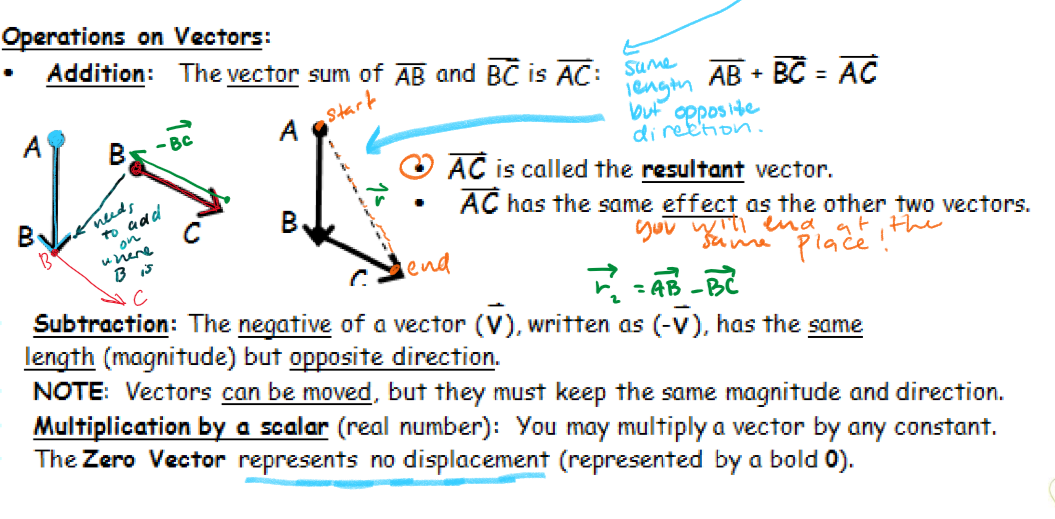
subtraction on vectors
the negative of a vector is (-v) with an arrow. it has the same LENGTH (magnitude) but OPPOSITE direction
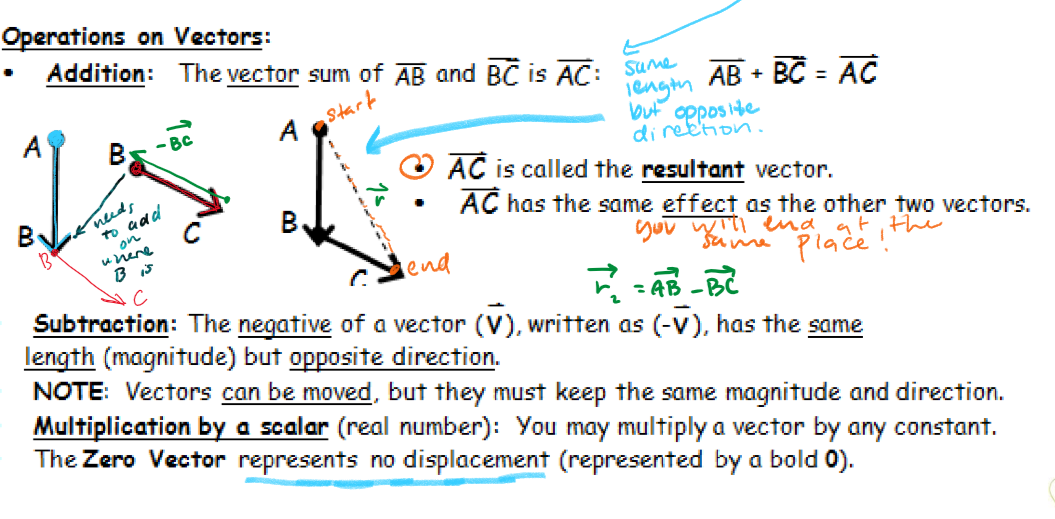
multiplication by a scalar
you can multiply a vector by any constant
bearing vs direction angle
bearing is clockwise from north, direction angle is counterclockwise from positive x-axis
component form of a vector
a vector is in standard position if its initial point is at the origin (0,0). the components of a vector are found by projecting the vector onto the coordinate axis in standard position.
example of component form: <7,4>
v= <a,b>, with a being horizontal and b being vertical component

displacement
final position - initial position of a vector
calculating magnitude of a vector algebraically
(||v||)² aka magnitude = x² + y² (horizontal and vertical components) basically right triangle trig
algebraic operations on vectors
if you know your <a,b> you can easily use these formulas!
if u = <a1, b1> and v= <a2, b2>:
u + v = <a1+a2, b1+b2>
u - v = <a1-a2, b1-b2>
cu (multiplying vector by a scalar) = <ca1, cb1>
vectors in terms of i and j
the unit vectors, i and j have a magnitude of one.
v = <a, b> = ai +bj
ex: 7i + 4j
unit vector
creating a unit vector from another vector v is called normalizing the vector
formula: u = v/||v||
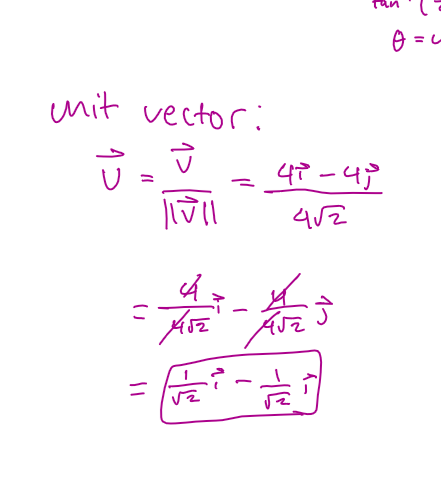
equilibrant vector
opposite of a result vector. balances a combination of vectors such that the sum of the vectors and the equilibrant vector is the zero vector
formula: the equilibrant vector of a+b is -(a+b)
horizontal and vertical components of a vector
<a, b> basically
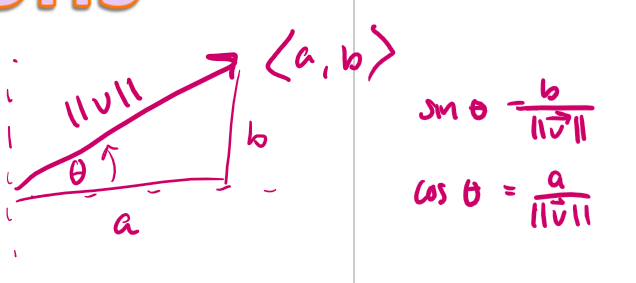
dot product
get hype

angle between two vectors/dot product theorem

orthogonal vectors
two vectors that are perpendicular if (u)(v) = 0. so basically use the dot product and you can see if its zero
parametric form to rectangular form
trick—use sin²t + cos²t = 1!!
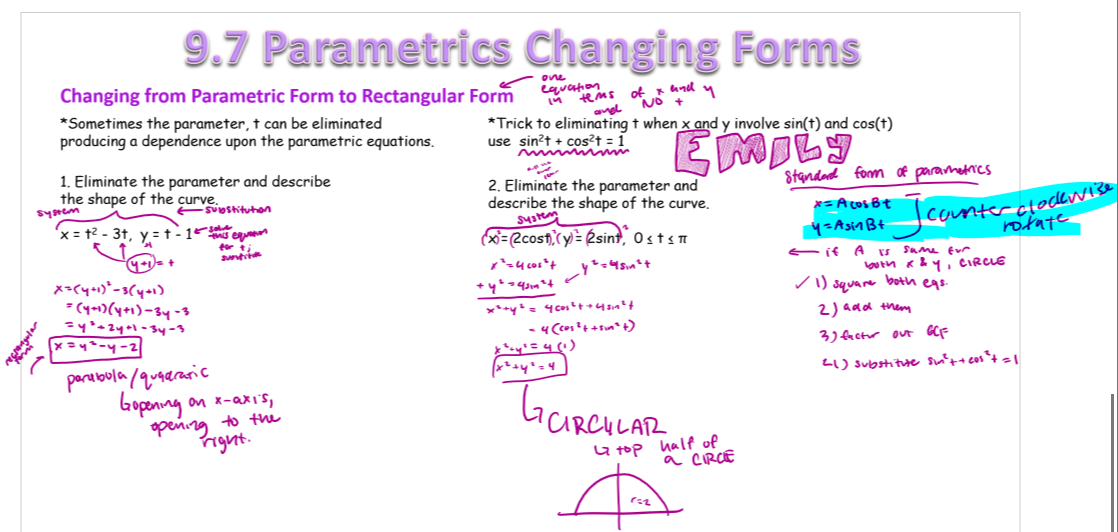
standard form of parametrics…
x=AcosBt
y=AsinBt
if A is same for both x and y, it will make a circle!
square eqs
add them
factor out GCF
substitute in 1
rectangular form to parametric form
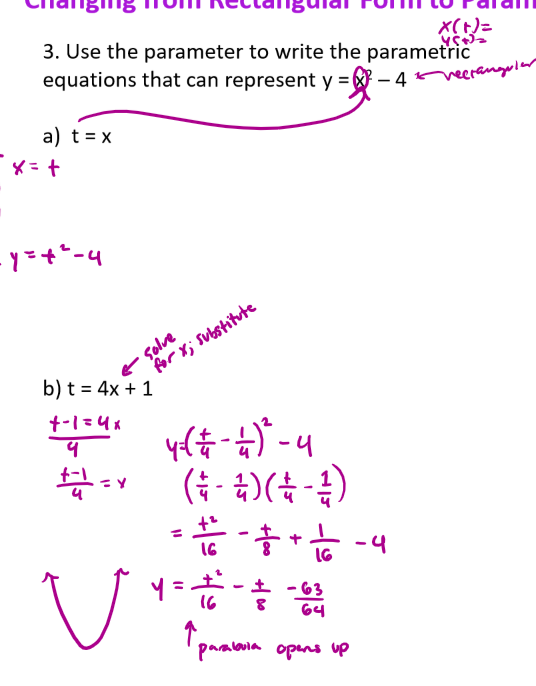
explain how to do this
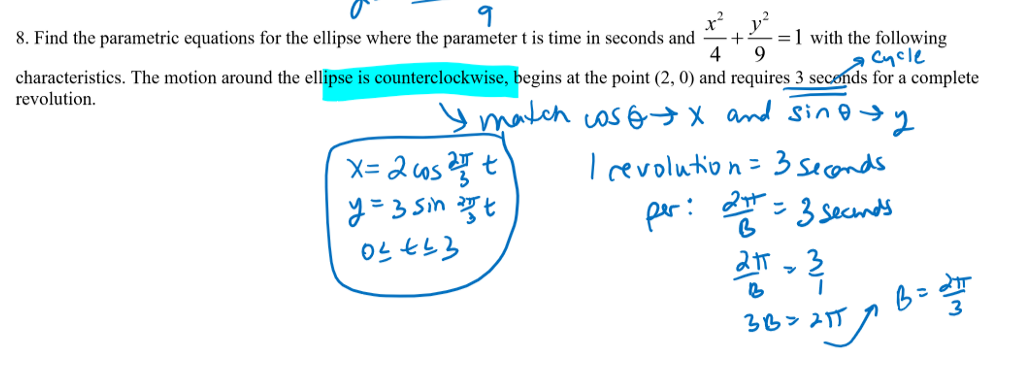
explain how to do this

explain how to do this
